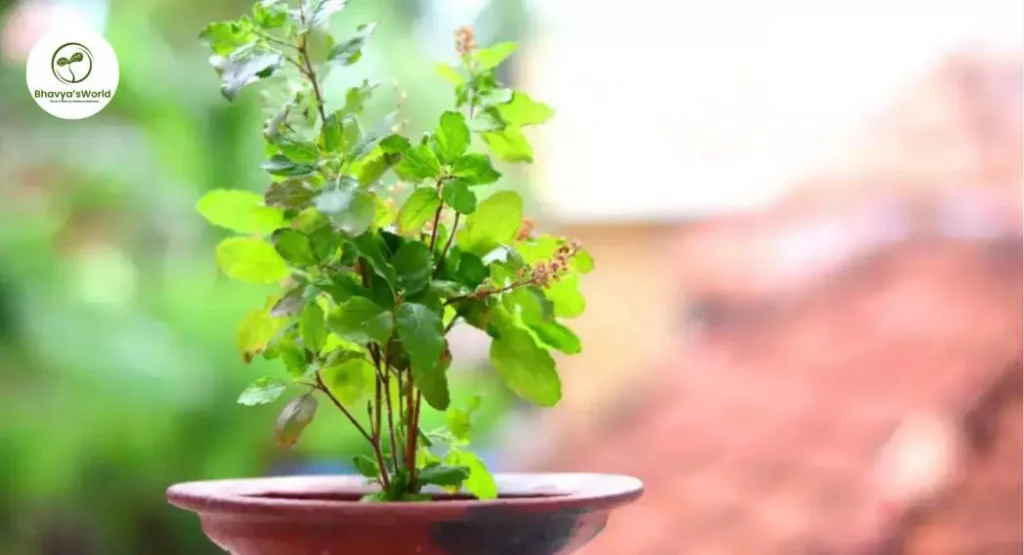Tulsi plant care is crucial for promoting healthy growth, enhancing yield, and reaping numerous benefits.
Let us answer the question, i.e., What tulsi or Holy basil is , or in other words,Ocimum tenuiflorum. People know this plant for its sacredness, nutritional, and medicinal importance.
According to some research, different parts of plants treat various conditions. Additionally, many advantages of tulsi plants make them different from other herbs.
Why do People Cultivate the Tulsi?

As we all know, Holy basil is important in Indian cultures not only because it enhances the beauty of your garden but also has medicinal and religious significance.
Furthermore, don’t forget about how immensely tulsi is filled with nutritional properties. In addition, they also plant it to use as Herbal Tulsi Tea which practitioners commonly consult in Ayurveda.
Reasons Why Tulsi Deserve Special Care
People often combine Tulsi with words like “god”, “holy”, “deity”, and “divine”.
Tulsi in Ayurveda says that this holy plant possesses therapeutic properties and is also used in systems of medicines. In Ayurveda, they refer to Holy basil is known as the Elixir of Life because it encourages longevity. You know Tulsi Tree care includes daily prayers and rituals,involving spirituality in daily life.

| Architectural Role |
| Usually, in Traditional Indian homes, it has a courtyard, or we can say Aangan, which is treated as the heart of the house. Moreover, planting the tulsi there can lead to spiritual practices in daily life. |

| Religious Value |
| Scared plant Tulsi is considered as a sacred plant and is, furthermore,related to Lord Vishnu and Goddess Lakshmi in Hindu culture. Warding off negative energy One of the benefits of Tulsi is that it can ward off negative energies and let positive energy and vibration enter into homes. |
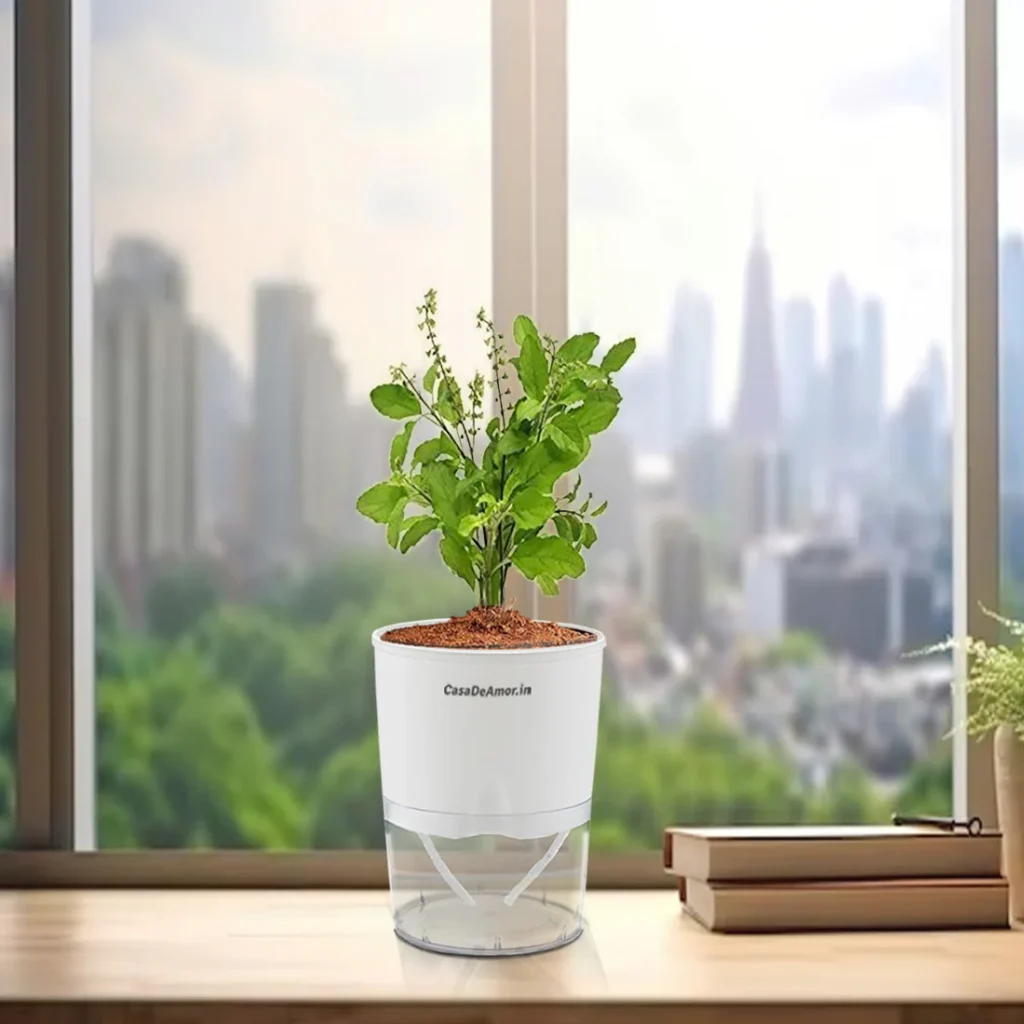
| Environmental Benefits |
| Environment Purification Tulsi can purify the air by releasing a good amount of oxygen; furthermore, it absorbs harmful carbon dioxide. As a result, this, in turn, automatically improves a household’s air quality. Refreshing Climate The Tulsi plant cools and refreshes the climate of the house, warm regions. |
Types of Tulsi & Their Care Needs
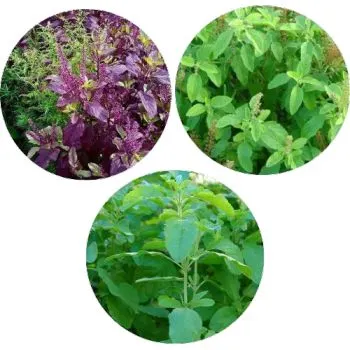
Each type of Tulsi requires different care usually based on its environment,habitat and growth patterns.
| Types | Rama Tulsi |
| Sunlight | 6-8 hours |
| Soil | Well-drained soil. Rich in nutrient soil |
| Watering | Moderate No over-watering |
| Climate | Warm and Humid |
| Special Care | Vulnerable to pests like Aphids |
| Types | Krishna Tulsi |
| Sunlight | 6-8 hours |
| Soil | Well-drained soil with organic compost |
| Watering | Moderate Soil should be little moist.No water-logging |
| Climate | Warm temperature |
| Special Care | Vulnerable to Fungal Infections |
| Types | Vana Tulsi |
| Sunlight | Full sun or partial shade |
| Soil | Well-drained and loamy soil |
| Watering | Less water than others |
| Climate | Drought tolerant |
| Special Care | Grows more than other types,Need more space |
Best Homemade Fertilizer
For Tulsi plants, it is very important to provide care; moreover, we play a key role in fertilizing this process, alongside watering and pruning.
Therefore, instead of buying fertilizer from the market, we can make some good natural fertilizers. In this regard, we discuss what those are and how to make them.
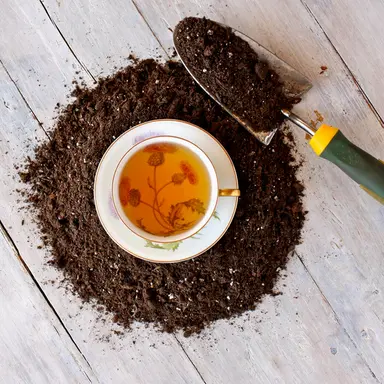
Composting Tea
- Leaves
Collect some dried tea leaves or tea bags but make sure those bags are biodegradable and dont have plastic.
- Compost Bin
Choose a compost bin (either a small container or a place in your garden.)
- Layering
Layer you compost with green nutrient such as dried tea leaves and balance it by adding a second layer of things like shredded paper or cardboard.
- Avoid Sugary Tea
Do not use tea that contains milk,sugar or any sweeteners,it will attract pests.
- Mixing
Mix the compost every week because it will ensure the proper circulation of air and decomposition process.
- Maintaining Moisture
If it feels too dry, you should add water, or if it’s too wet, you should put dry leaves.
- When to Use
Check after 6-8 weeks or longer, it will become dark and browny and has earthy smells.
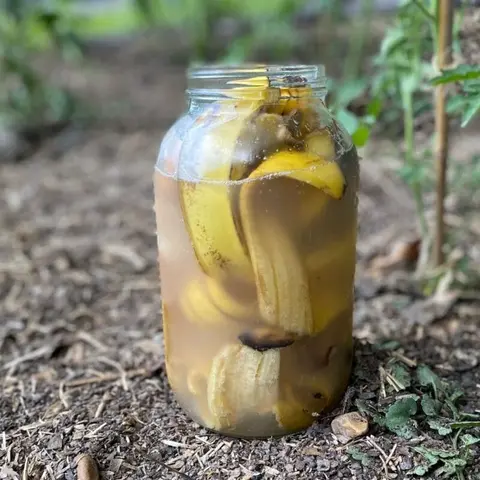
Banana Peel Fertiliser
Potassium and essential nutrients fill bananas. Moreover, you can dry the banana peels in the sun; subsequently, crush or blend them in a mixer and turn them into powder. Finally, scatter them into the tulsi plant.
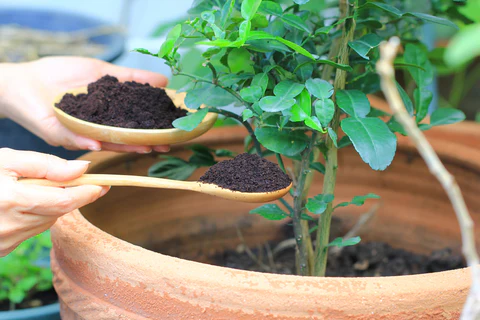
Coffee Fertiliser
Coffee grounds provide nitrogen that helps to improve soil fertility.
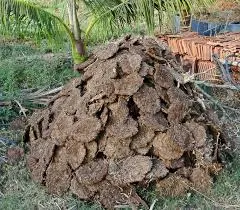
From Cow Dung
It is traditionally used in India as natural fertiliser. Specifically, you can mix cow dung in water to make it slurry, and the ratio should be 1:5. Furthermore, using this water on the Tulsi plant to make it healthy and bushy,but it will provide every nutrient that Tulsi needs.
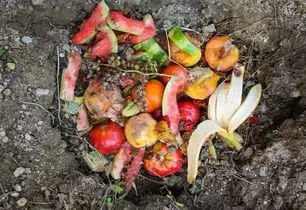
Vegetable Scrap Fertiliser
For tulsi plant care, you can use vegetable peels and scraps. Additionally, you can steep them in water for a few days, this will create nutritional water.

Epsom Salt Fertiliser
People also call it Magnesium sulfate, which helps in plant growth. For instance, you can mix a tablespoon of salt in a bucket of water and water tulsi once a month. Additionally, you can include it in the procedure of taking care of tulsi.
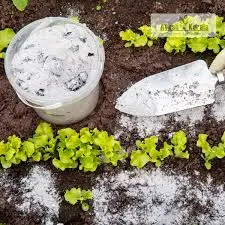
Wood Ash Fertiliser
Wood ash is a source of potassium and calcium that you can put in soil.
How To Grow a Healthy Tulsi Plant
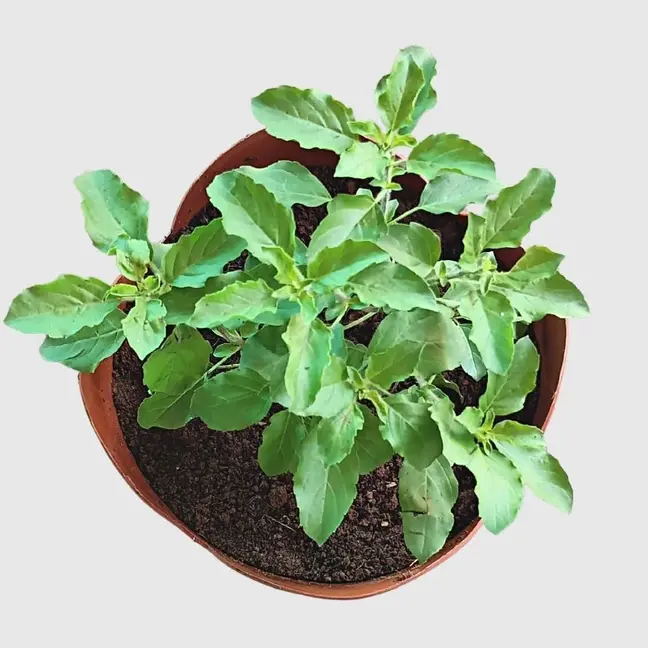
If you want to take care of tulsi plants, first of all we have to know how to plant tulsi.
Here are some steps that are required to grow tulsi. Growing and planting tulsi at home is very simple and a rewarding experience.
It starts with seeds or a sapling and ends with providing care and the right conditions for growth.
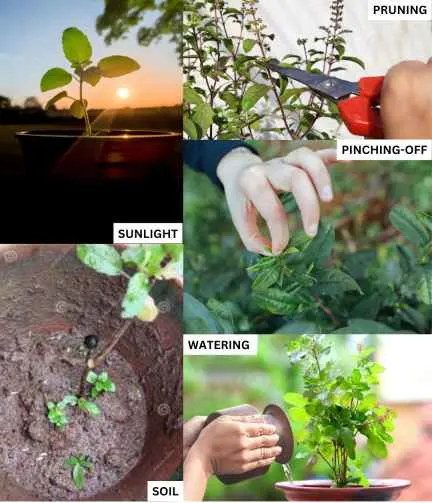
| Soil To grow a healthy Tulsi Plant we need well-draining loamy or sandy soil.You can add organic fertilizer that works best for Tulsi. |
| Sunlight Tulsi grows and develops best in warm,sunny areas. Make sure Tulsi gets direct sunlight for at least 4-6 hours daily. |
| Watering Tulsi needs moderate type of watering. You can water the plant 2-3 times a week and make sure the soil remains moist.Do not water log it and reduce the amount of water in winter. |
| Pruning When you trim the top leaves and branches, it helps plants to grow more.Pruning the plant makes the plant more bushy and healthy. |
| Pinch Off Flower When tulsi start flowering ,you have to pinch off the buds because it makes the plant less bushy and leggy. |
Common Problems in Tulsi Plant Care
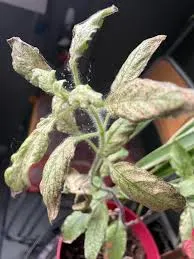
While taking care of Tulsi we should know that like every plant tulsi also faces issues from pests and diseases.
| Pests Whiteflies : You can spray Neem oil solution or mild soapy water. Spider Mites : Keep Humidity levels optimal. |
| Diseases Fungal Infections : To remove fungal infections make sure you have proper air circulation and do not water-log the soil. Rotting of Root : It occurs because of water logging by using well draining soil and having drainage holes in the pot. |
| Environmental Issues Sagging : It happens when you underwater the plant or can be because of excessive heat. Leaves turning yellow : It happens when you over-water a plant or do not get proper nutrients . |
Tips for Tulsi Plant Care (Seasonal)
In Tulsi Plant care,We should know every plant needs different care in different seasons.
Summer Season
In taking care of tulsi, we should know that consequently,the excessive heat will lead to yellowing of leaves or burning.
Therefore, put them under a partial shade and, in addition, provide them with enough water so they don’t get dry.
Winter Season
Tulsi does not need excess water in the winter season and tries to keep them in a warm place.
Monsoon Season
As we all know tulsi do not need excessive water so we have to protect them from it and prevent them from having fungal infections.
General Tulsi Care Tips

Fertilisation: You need to use organic compost or homemade fertilizer every 15-20 days.
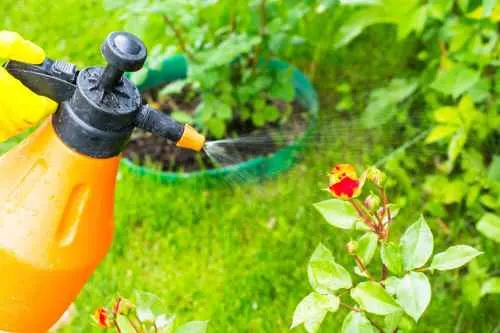
Pest Control: You can spray Neem oil to keep away pests
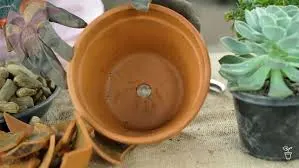
Pot or Ground : If you planting tulsi in pot then make drainage holes to prevent from root rot
Rules and Regulation
There are some rules and regulations for taking care of tulsi. Here are some of the followings :
Religious Emotions

First of all we should keep in mind that if any one wants to plant tulsi.
Correct Direction
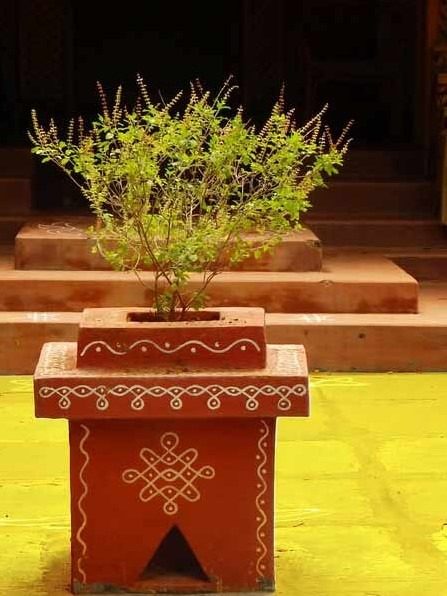
If Vastu Shastra is believed in by anyone, then it is believed that a plant should be placed in the east direction, as sunlight will be received by it to grow and bring positivity and prosperity in life.On the other hand, if it is planted in the south direction, it is believed that negative energy will be attracted by it, and consequently, your marriage can also be disturbed.
Respect the Holy Basil

Don’t treat the tulsi plant as a normal wild plant. In fact, remember that people regard Tulsi for its sacredness and therefore treat it as a divine and holy plant; thus, give it proper respect.
Avoid Putting Weird Places
As tulsi is a sacred plant avoid placing it near dirty places, dustbins ,near shoes ,brooms etc.Try to maintain its sacredness.
Platform
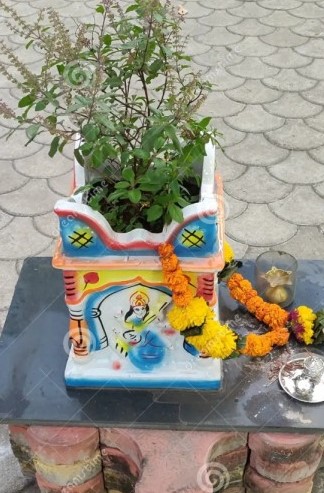
Try to put the tulsi pot a little higher than usual at home.
Remove the Dry Tulsi

If you have dry leaves in your courtyard or garden, remove them. They bring bad energies and luck. Try replacing them with new ones to bring positive energy
Offering

Keep in mind that in Hindu culture, please do not offer tulsi leaves to Lord Shiva as legends consider it the wife of Shankhchood, whom Lord shiva defeats.
Number of Plants
According to Vastu Shastra,putting tulsi plants in odd numbers like 1,3,5 will increase the positivity in your home.
Best days
People believe that the best days to buy tulsi are Tuesdays and Thursdays.
Medicinal Uses of Tulsi Plant
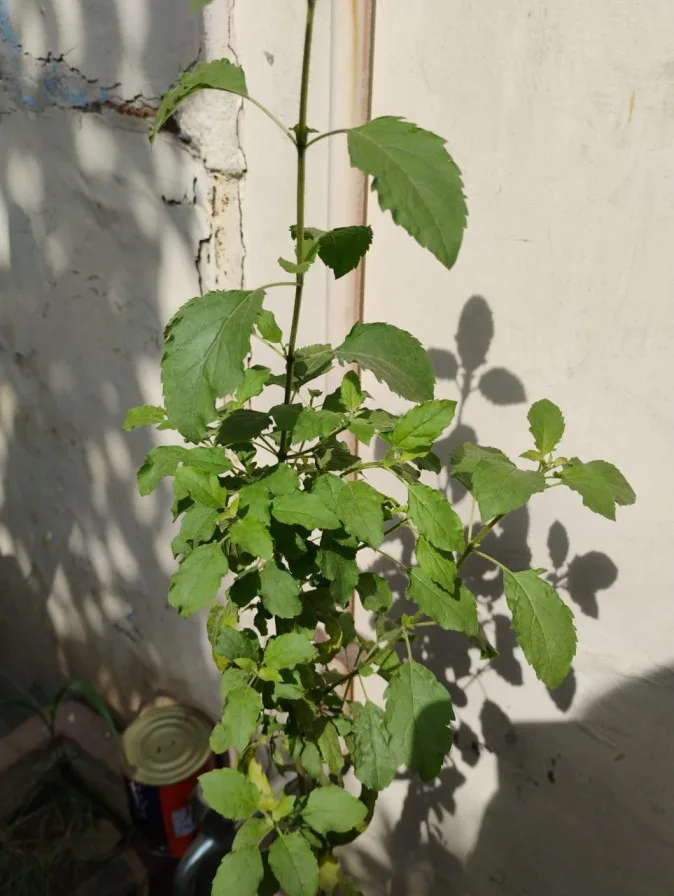
Chemicals in plants and certain foods fill Holy Basil and can affect on living organisms, tissues, or cells. Furthermore,these chemicals positively impact humans by promoting good health as well as preventing cancer and heart disease.
Some of tulsi medicinal uses are given below :-
- Effective on Cold and Flu
- Maintains the level of sugar
- Acts as natural Detoxifier
This mixture of spiritual,religious reverence and practical medicinal and health benefits make evident why Tulsi needs special care,respect and attention in homes or wherever they are planted.
Planting Tulsi v/s Planting Basil: Key Differences
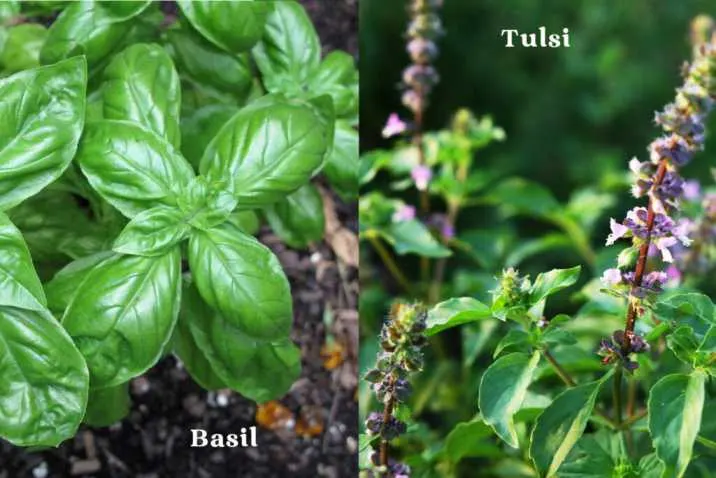
If we talk about the difference of Tulsi v/s Basil, then, first of all, we should know that they both have the same starting name, which is Ocimum. Furthermore, both herbs belong to the same family, i.e. Lamiaceae. However, they both have different care requirements because of their different growing conditions and uses.
| Types | Tulsi | Basil |
| Region | Indian Sub- continent | West (thailand) |
| Used In | Herbal tea and Ayurvedic Remedies. | Western cuisines recipes |
| Climate and Temperature | Warm and tropical Temperature between 20-30 degree celsius. | Also like warm weather ,it’s a little delicate.Temperature between 18-30 celsius |
| Sunlight | 6-8 hours | 6 hours |
| Wateing | Moderate watering is required No waterlogging | Frequent watering No waterlogging |
| Type of Soil | Well-draining , slightly sandy soil | Rich soil |
| Fertilizer | No need for fertilizer | Need good nutrient fertilizer |
| Harvesting | Pruned regularly to grow bushy | Needs frequent pinching of leaves to make it productive |
| Pests Resistance | Natural pest resistance Attract fungal diseases | Prone to pests |
Tulsi products with Practical Application
There are so many Tulsi products that are used in making tea,skin and hair care and many more.
Herbal Tea

According to Ayurveda, Tulsi tea is an herbal infusion without any caffeine, full of nutrients and antioxidants.
Tulsi Powder

Tulsi leaves are dried up and ground into powder. Then this powder is:
- Used as Face masks ,
- Mixed in smoothies,
- Put in boiling water to help to ease the pain of sore throat.
Tulsi Oils
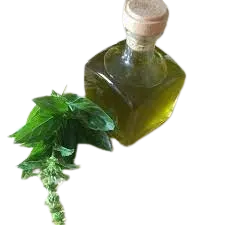
Holy basil oil is extracted from the leaves and then:-
- Used for its antimicrobial and anti-inflammatory properties.
- It is applied to skin infections or other skin issues.
- It is used for Aromatherapy and massages.
- Applied to relieve the joint pains.
- It can also be applied when one is suffering from Headache.
Ayurvedic Tulsi Drops
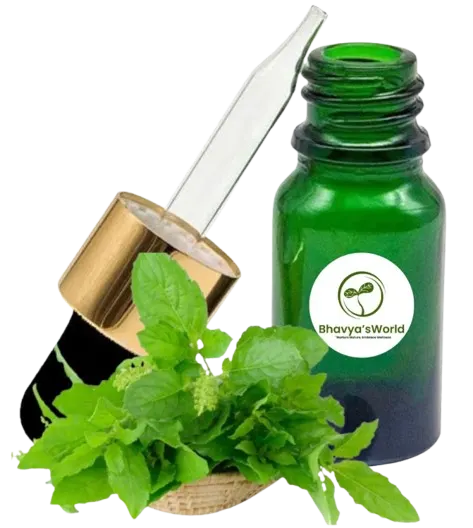
Its drops are put in the eyes for good eyesight.
Conclusion
To summarize, In the condition, tulsi plant care requires proper attention, specifically from the preparation of the soil to watering, pruning, and giving seasonal maintenance. Furthermore, whether you have planted tulsi for religious, medicinal or environmental benefits, it is essential that Tulasi care ensures that this holy plant grows and develops healthily. Ultimately, you can properly take care of the tulsi plant by just reading the above things, and as a result, people can learn, grow, and take care of their tulsi plant properly.
“Looking for Tulsi-based products? Explore our next blog on Tulsi Products!”
